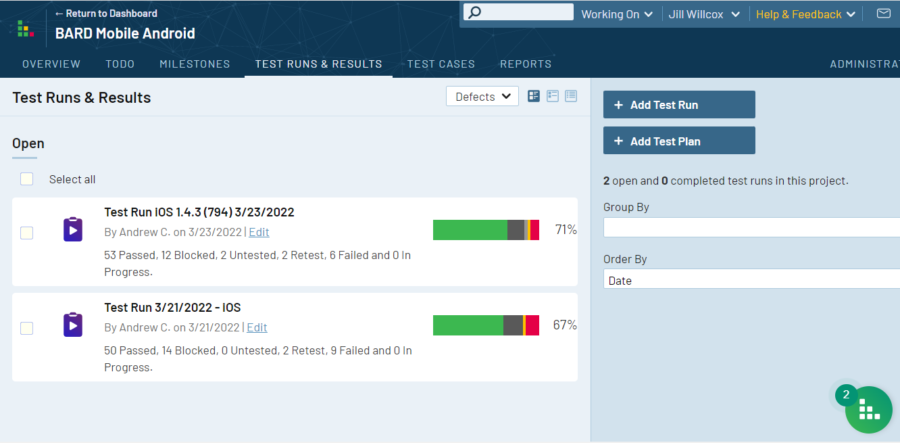Author

Blogs
Article & Observations About Diverse Teams Working Better Together
Software Testing Client Project Case Study

We are often asked what software testing is. The video below shares a solid definition of the term.
But we thought a software testing project case study might be helpful to better understand what software testers do on a typical day. This includes testing software, writing requirement documents for our clients, and creating user guides to ensure compliance for our clients to use for quality assurance and auditing purposes.
Iterators LLC washired to complete accessibility testing for a few projects for the Library of Congress (LOC).
Accessibility testing is required on all government websites, with Section 508 and WCAG 2.2 requirements used. To become a Trusted Tester an employee must complete the DHS Trusted Tester online training course requirements and pass the DHS Section 508 Trusted Tester Certification Exam of Homeland Security in Accessibility, and we are in a unique position to help on this project.
We cross-train all our employees so that we can work on several projects at one time or several different aspects of a project to complete the work and reduce the cost to our clients.
Our first project assigned by LOC was testing their new braille feature on BARD Mobile for Android. We were tasked with testing the braille feature with several refreshable braille displays.
During our testing, we used the Orbit Reader 20, and two different braille displays from Freedom Focus 14 and Freedom Focus 40. There are plans to use other refreshable displays such as Humanware, but this testing has not occurred yet. We needed to test refreshable braille displays and their use in tandem with Google BrailleBack and Google TalkBack.
This work was to ensure that all hardware worked as expected with the apps we were testing. For this testing, we had to complete functional testing, smoke testing, exploratory testing and had a user panel to ensure we caught all issues that a visually impaired individual might experience while using the app.
Initially, our client was unsure if we would find any bugs and hesitant to have us enter bugs into Bugzilla as they stated the software was “complicated”. Bugzilla is a web-based general-purpose bug tracking system and not unlike other bug tracking systems we use every day such as Jira, TestRails, PractiTest, and Click-Up.
Testing was completed over several agile sprints with many significant software testing bugs found. Our testing had us test against the National Library Service requirements document. Next, we had to create an up-to-date user manual. While the manual had been updated several times, the testing had not been.
For example, when downloading a book or magazine from the Now Reading section of the mobile app, the download would end up at the bottom of the page. For years, the user guide had listed the download being at the top of the page once the document was downloaded.
Our testing team, on several occasions, said this was an error in the documentation and that the download ends up at the bottom of the page. This was corrected in the user document and sent to the development team to fix per the requirement document.
Over the next several months, we reported 30 high-priority bugs with about half fixed at this point. We have encouraged our client to test in an agile fashion because once the development team is finished, it’s harder to get these bugs fixed.
Our bugs were reported and based on the requirement document used to create the software. Lastly, the user guide had to be rewritten to reflect the app's behavior and general updates.
Once the app was tested and created, the user guide was sent to Communication Services to ensure the style used per other requirement documentation. This document had to be approved before being disseminated to the public. For example, how does the library determine what the Most Popular Books are, and over what period.
Once the document was returned from COS, this PDF document had to be remediated. The process of remediation is to make a PDF, create the heading for the document, alt text added to meaningful images, and decorative images either ignored or taken out of the digital document altogether.
Once the remediation process is complete and validated, the document becomes ADA-compliant. We then provide an accessible PDF that can be read with the use of a screen reader and create the HTML output so that the document can be added to the Library of Congress website.
You can find the current user guide we completed here: https://www.loc.gov/nls/braille-audio-reading-materials/bard-access/bard-mobile-android/#creatingfolders3.3
Case studies can be a great learning tool in software testing and project management. By looking at project case study examples, you can see how the project was planned and executed, as well as how certain tasks were managed. This can give a better understanding of what software testing involves on a daily basis. With the right software testing case studies example, software testers can hone their skills, improve project performance, and ultimately deliver better software testing results.
Related Resources:
About the Author
Jill Willcox has worked on accessibility issues for most of her professional career. Iterators is an inclusive women-owned small business (WOSB) certified by the Small Business Administration and WBENC. We provide software testing services for websites, mobile apps, enterprise software, and PDF remediation services, rendering PDFs ADA compliant.

